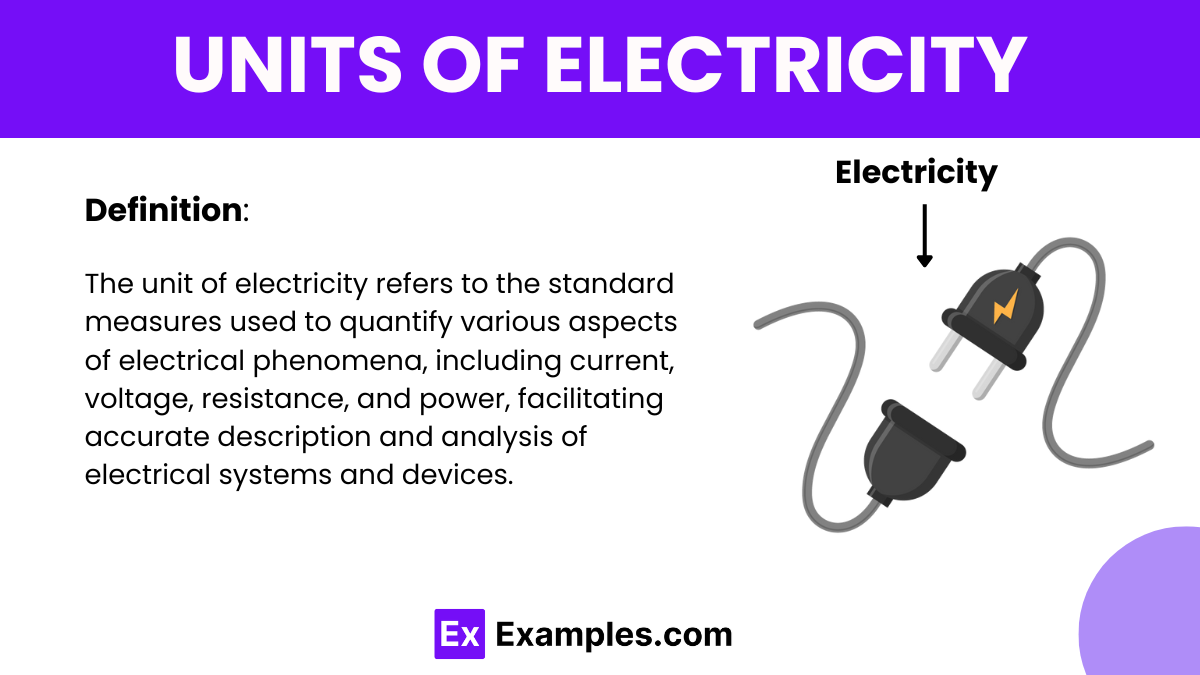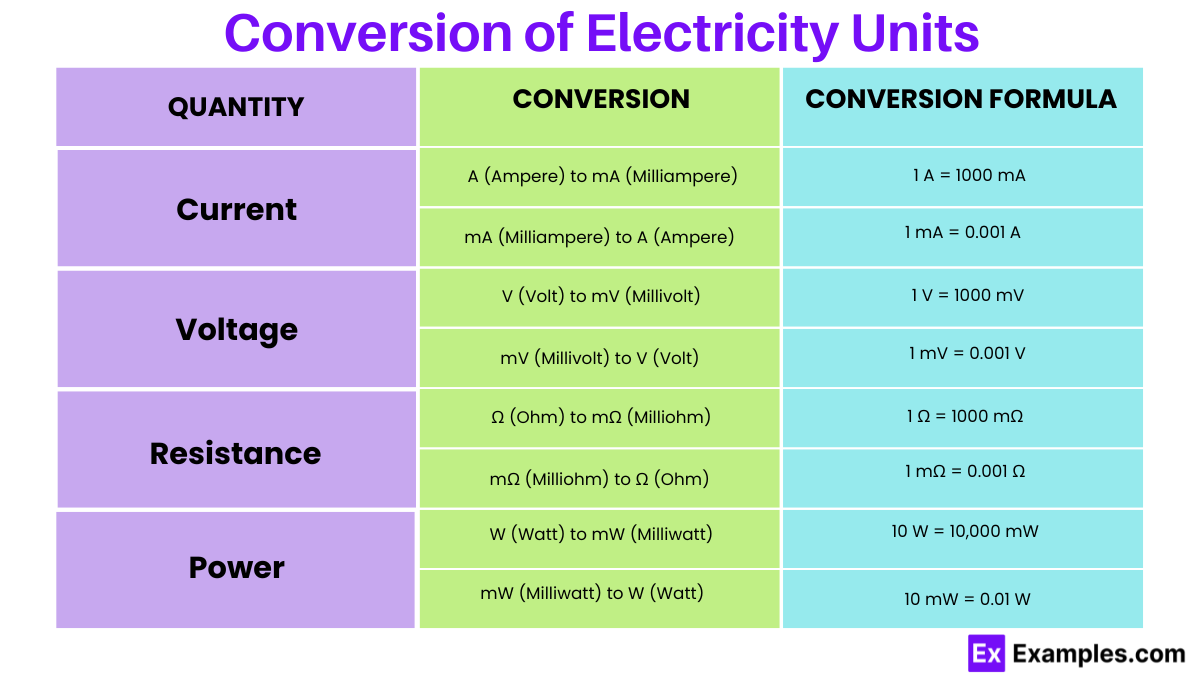What is the SI unit of electric current?
Volt
Ohm
Ampere
Coulomb


eElectricity, a fundamental force in the universe, plays a pivotal role in various aspects of modern life, from powering homes and industries to enabling communication and transportation systems. Understanding and quantifying electricity require the use of standardized units that facilitate measurement, analysis, and communication in scientific and engineering contexts. These units provide a consistent framework for expressing electric quantities such as current, voltage, resistance, and power. In the field of physics, the study of electricity involves exploring the relationships between these fundamental quantities and their interactions within electrical circuits and systems. Whether it’s measuring current in amperes, voltage in volts, or resistance in ohms, units of electricity form the foundation for our understanding and utilization of this essential force.
| SI Unit | Symbol |
|---|---|
| Ampere (A) | A |
| Volt (V) | V |
| Ohm (Ω) | Ω |
| Watt (W) | W |

| Quantity | Conversion | Conversion Formula | Example |
|---|---|---|---|
| Current | A (Ampere) to mA (Milliampere) | 1 A = 1000 mA | 10 A = 10,000 mA |
| mA (Milliampere) to A (Ampere) | 1 mA = 0.001 A | 10 mA = 0.01 A | |
| Voltage | V (Volt) to mV (Millivolt) | 1 V = 1000 mV | 10 V = 10,000 mV |
| mV (Millivolt) to V (Volt) | 1 mV = 0.001 V | 10 mV = 0.01 V | |
| Resistance | Ω (Ohm) to mΩ (Milliohm) | 1 Ω = 1000 mΩ | 10 Ω = 10,000 mΩ |
| mΩ (Milliohm) to Ω (Ohm) | 1 mΩ = 0.001 Ω | 10 mΩ = 0.01 Ω | |
| Power | W (Watt) to mW (Milliwatt) | 1 W = 1000 m | 10 W = 10,000 mW |
| mW (Milliwatt) to W (Watt) | 1 mW = 0.001 W | 10 mW = 0.01 W |
To convert from Ampere (A) to Milliampere (mA), you multiply the value in Ampere by 1000.
To convert from Milliampere (mA) to Ampere (A), you divide the value in Milliampere by 1000.
To convert from Volt (V) to Millivolt (mV), you multiply the value in Volt by 1000.
To convert from Millivolt (mV) to Volt (V), you divide the value in Millivolt by 1000.
To convert from Ohm (Ω) to Milliohm (mΩ), you multiply the value in Ohm by 1000.
To convert from Milliohm (mΩ) to Ohm (Ω), you divide the value in Milliohm by 1000.
To convert from Watt (W) to Milliwatt (mW), you multiply the value in Watt by 1000.
To convert from Milliwatt (mW) to Watt (W), you divide the value in Milliwatt by 1000.
Understanding electricity units is essential for designing, analyzing, and troubleshooting electrical circuits in various fields such as engineering, electronics, and telecommunications.
To convert between units, use conversion factors based on the relationship between the units. For example, to convert from ampere (A) to milliampere (mA), multiply the value in ampere by 1000.
Milliunits are smaller units of measurement, representing one-thousandth of the corresponding standard unit. For example, 1 milliampere (mA) is equal to 0.001 ampere (A).
Text prompt
Add Tone
10 Examples of Public speaking
20 Examples of Gas lighting
What is the SI unit of electric current?
Volt
Ohm
Ampere
Coulomb
What is the unit of electric potential difference?
Ohm
Joule
Coulomb
Volt
Which unit is used to measure electrical resistance?
Ampere
Volt
Ohm
Watt
What is the unit of capacitance?
Henry
Farad
Coulomb
Ohm
Which unit measures the inductance of an electrical circuit?
Farad
Henry
Coulomb
Ohm
What unit is used to measure energy in an electrical circuit?
Joule
Watt
Volt
Ampere
What is the unit of conductance?
Siemens
Farad
Coulomb
Henry
Which unit is used for measuring the magnetic field strength?
Tesla
Farad
Volt
Ampere
What is the unit of electric field strength?
Newton
Volt per meter
Coulomb
Joule
Which unit is used to measure the rate of flow of electric charge?
Volt
Ampere
Ohm
Joule
Before you leave, take our quick quiz to enhance your learning!

